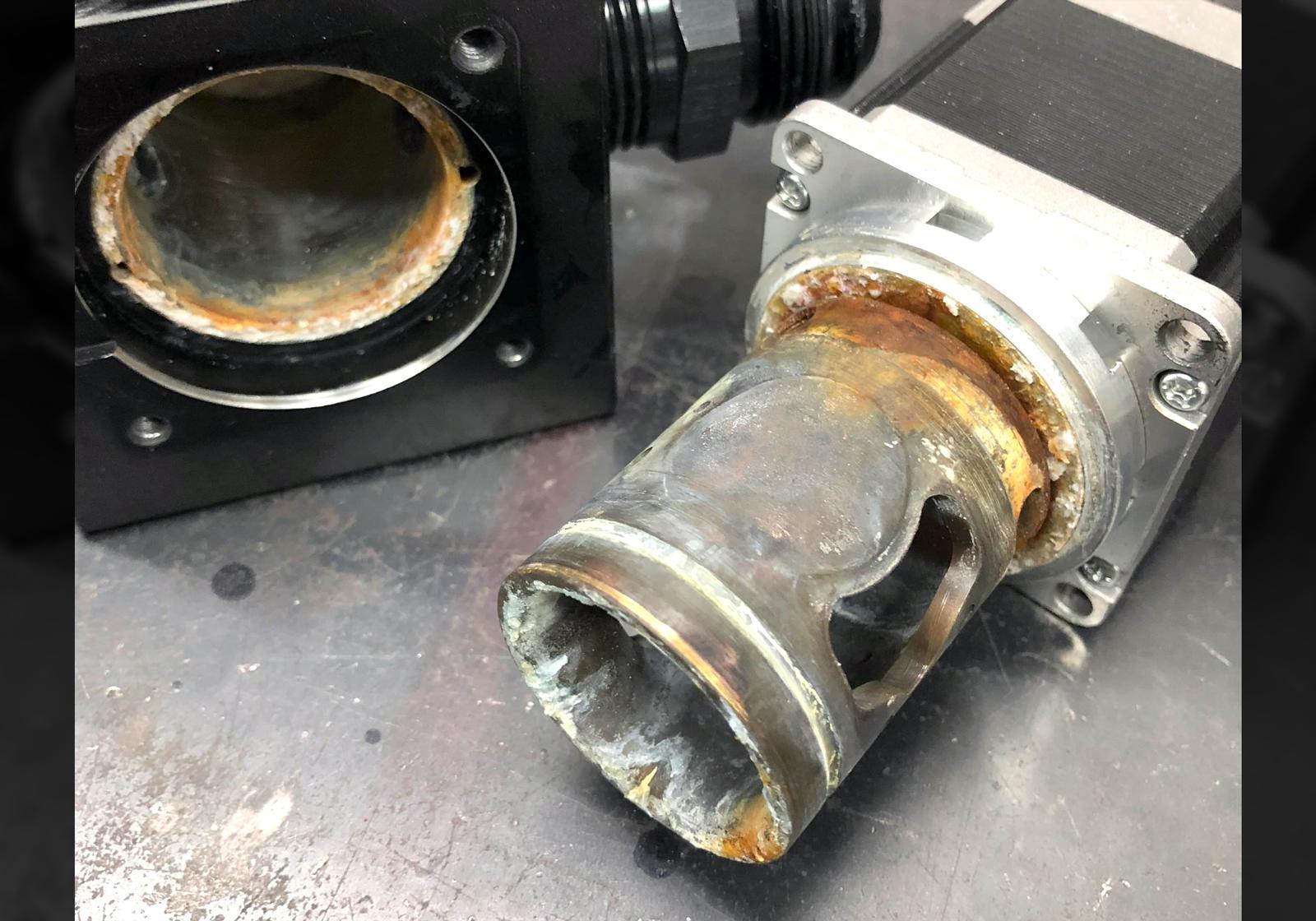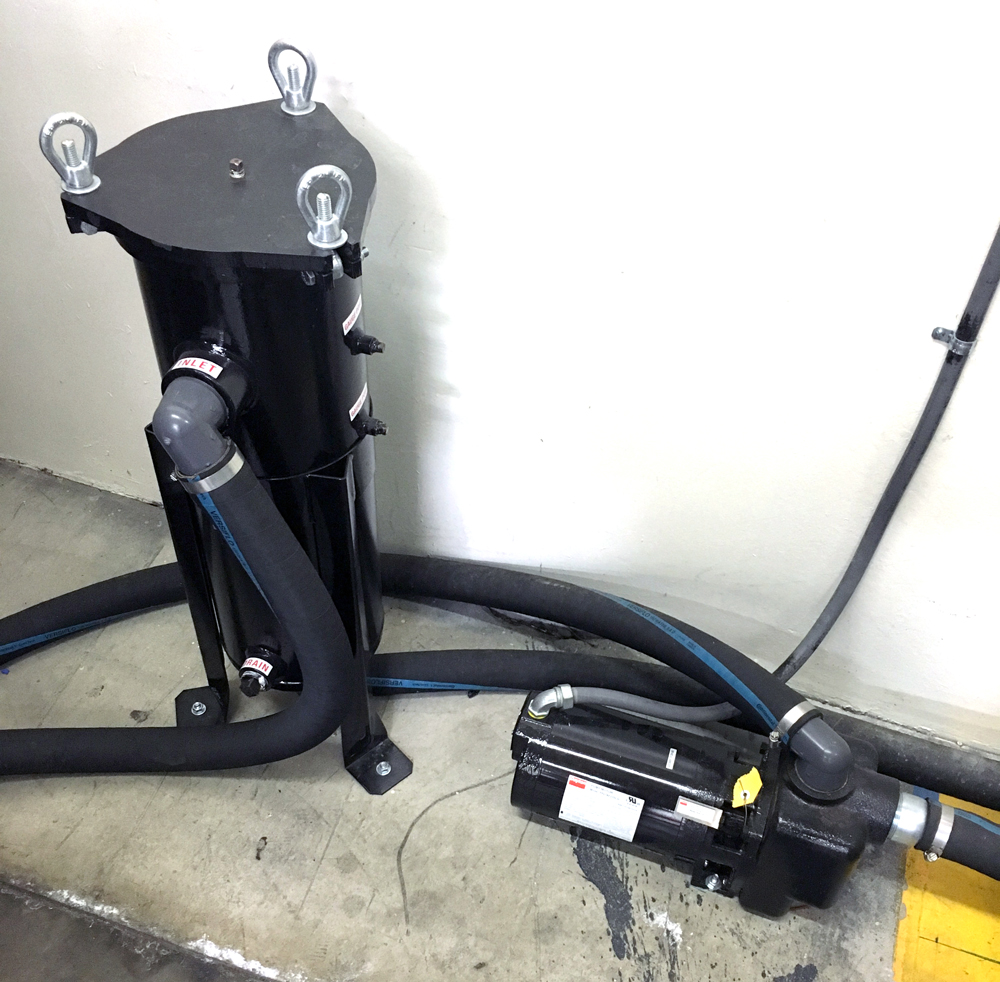Ask the Experts: Engine Dyno Maintenance

YourDyno provided this example of dynamometer absorption cavitation. A company representative said this is caused by high absorber temperatures and an undersized water system.
Dynamometers play a vital role in engine tuning, but if these sophisticated devices aren’t maintained properly, the accuracy of the data they provide can be compromised.
Engine dynos are designed to deal with some extreme forces, but they are ultimately sensitive measuring instruments, and the quality of the results they provide is highly dependent on owners’ maintenance habits. And as Kevin Hamilton of Nesbru, Norway-based YourDyno pointed out, sometimes owners can create maintenance problems without even knowing it.
“Using untreated water in an engine dyno can cause significant problems,” he explained. “Hard water can cause electrolysis if you’ve got dissimilar metals in a component of the dynamometer, and that will eat away at that metal. Untreated water can also cause calcium buildup, which can create other problems. There are a multitude of bad things that can happen with water that hasn’t been treated properly.”
Meanwhile, Ben Fox of SuperFlow in Sussex, Wisconsin, noted that water can also be inadvertently contaminated as well. “One of the biggest problems that I see is that engine shops will get blocks or cylinder heads in, and they’ll do machine work to them, but they won’t clean out the solvents and detergents within the castings thoroughly enough. After the engine is assembled, they put it on the dyno, and that solvent or detergent gets into the water system. That can cause foaming issues, and if it gets into the absorber side of the control system, it can cause all sorts of control problems.”
Hamilton also said that regular recalibration should be a part of any engine dynamometer maintenance routine. “Folks regularly let sensors, torque arms, and load cells go out of calibration. That’s a very common issue that we run into. If the scales are not appropriately dialed in for each sensor, you’re ultimately getting incorrect information from the dyno.”

He suggested these systems be recalibrated on a regular basis based on both the manufacturer’s recommendations as well as the frequency of the dynamometer’s use. “Weather correction is really important, too. You want to make sure that the weather station is measuring temperature, barometric pressure, and humidity within a reasonable margin of error. And you need to use some sort of standard measure against that, whether that’s an external system on a race car, or even just calling your local airport to get their readings.”
Jostein Fonneland of YourDyno told us that flexible couplings, drive hubs, and dampened driveshafts are commonly overlooked as well. These components can fail over time, and engine dyno operators often make the mistake of ignoring the resulting problems by cranking up noise reduction features.
“Some dynos will have a flex coupling, others will have a drive hub, and some have a dampened driveshaft,” Fonneland said. “Over time, the rubber inserts in the driveshaft will start to fail, and that can create harmonics and resonant vibrations. That resonance usually shows up in the torque line. Normally it will give an erroneous torque signal or torque spikes. Sometimes people will get a graph that doesn’t look good, and they will increase the noise filter to address the problem. But if there’s an internal part that’s failing, you’re not really taking care of the problem—you’re just hiding it. And the data behind it is not going to be as repeatable.”
Instead, Fonneland advised doing a run without any noise reduction filtering at all. “If the graphs look fine without any filtering, it’s a good sign that those parts are OK. But if there is an underlying problem, increasing the noise reduction filter isn’t going to resolve it.”
He also said that valve maintenance can play a vital role in the long-term performance of an engine dyno. “There are different styles of valves, and some will last a long time without any maintenance, but others will need to be taken apart to remove scale buildup, or they may start to stick. If a valve sticks, or it sometimes sticks and sometimes moves, it will be very difficult to get smooth sweeps.” Fonneland added that these problems tend to happen more often with barrel-style valves than with butterfly valves, but they should be checked for this buildup at regular intervals regardless.
Fox noted that disciplined maintenance of the water filtration system can help to prevent some of this buildup and ensure that the system continues to flow properly. “That should be the top priority when it comes to maintenance,” he said. “The water filtration system keeps the crud from ever getting to the absorber and servos, but it has to be maintained in order to keep it free-flowing. If it gets clogged, it’s going to create a water flow issue, and that will cause control problems.”
He said that the quality of water that’s being used largely dictates how often the filtration system should be serviced. But as a general rule of thumb, it’s a good idea to check the filters at least once a month, and they should be replaced yearly.
Sources
SuperFlow
superflow.com
YourDyno
yourdyno.com
 MEMBERSHIP LOGIN
MEMBERSHIP LOGIN JOIN PRI
JOIN PRI


